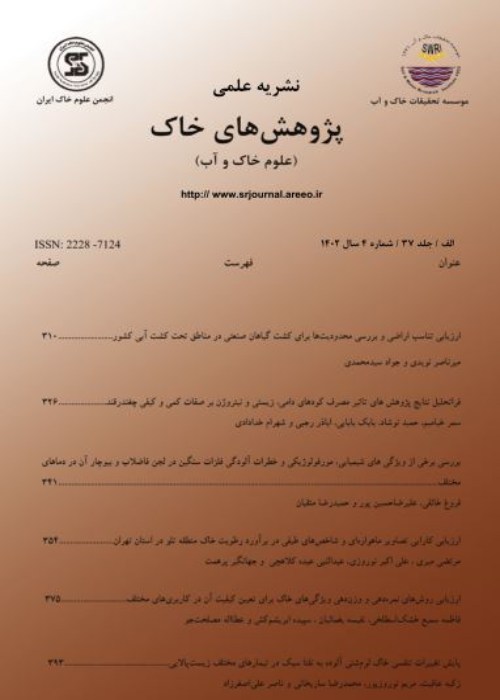Effects of Some Plant Growth Biostimulants on Yield and Yield Components of Rapeseed (Brasica napus L.)in a Saline Calcareous Soil
The purpose of this study was to use some plant growth biostimulants to improve canola yield in calcareous saline conditions. Therefore, a two-year experiment was conducted in Qomroud section of Qom Province during two cropping years of 2018-20 in a soil with salinity of about 13 and 10 dS.m-1, respectively, and irrigation water of 7.5-8 dS.m-1. The study was carried out in field conditions with uniform and flat soil using a randomized complete blocks design, in three replications. Seeds of Hayola-50 cultivar were planted by hand. Experimental treatments were: 1) Control (application of chemical fertilizer based on soil test), 2) Soil application of humic acid (treatment 1+ soil application of 5 kg of humic acid.ha-1), 3) Amino acid spraying (treatment 1+ spraying of amino acid with a concentration of 5 g per thousand), 4) Foliar spraying of humic acid (treatment 1+ spraying of humic acid with a concentration of 5 g per thousand), 5) Foliar spraying of folic acid (treatment 1+ foliar acid spraying with a concentration of 5 g per thousand), 6) Spraying of seaweed extract (treatment 1+ spraying of seaweed extract with a concentration of 5 g per thousand), and 7) Combined treatment (including treatment 1+ treatments 2, 3, 4, 5 and 6). Foliar application was done at two stages of 57 (after rosette) and 59 (before flowering). The biennial results showed that the combined treatment of growth biostimulants had a significant effect on grain and oil yield as well as some agronomic characteristics of rapeseed. The highest grain and straw yield was obtained from treatment 7 with an average of 4565 and 1066 kg.ha-1, respectively. Also, the highest mean values of K, Na, Ca, Mg, Fe, Zn, Mn, and Cu were obtained in, respectively, treatments 7, 1, 7, 7, 3, 4, 1, and 6. In addition, the highest uptake of K, Ca, Mg, and Fe was observed in treatment 7, followed by Zn and Cu in treatment 6, and in the case of Cu, in treatment 1. Based on the results, the combined use of growth biostimulants, compared to the control treatment, had a significant effect on yield and some agronomic characteristics of rapeseed in saline conditions, indicating the effect of these substances on increasing rapeseed tolerance to saline conditions.
- حق عضویت دریافتی صرف حمایت از نشریات عضو و نگهداری، تکمیل و توسعه مگیران میشود.
- پرداخت حق اشتراک و دانلود مقالات اجازه بازنشر آن در سایر رسانههای چاپی و دیجیتال را به کاربر نمیدهد.


